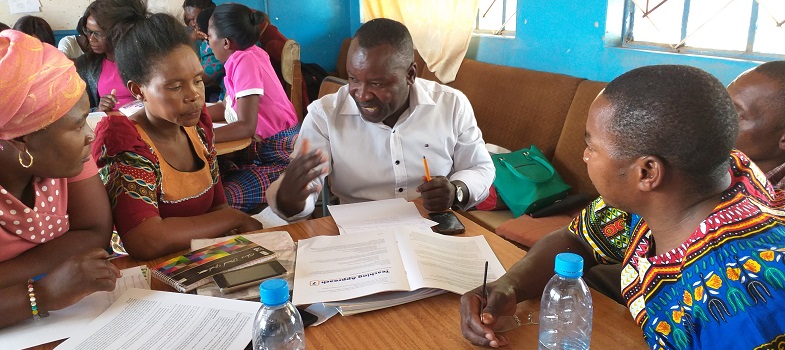Training guide
5. Supporting reading and writing across different levels
In the previous activity (5.7), you focused on assessing literacy skills in all your lessons. The techniques you use will differ depending on the age of your learners. In the lower primary years, much of the focus will be on developing literacy in the home language. In higher grades, you will need to support learners to ensure they can read and write in English.
Classroom Example 5.3: Using local resources to support literacy in science
Listen to the audio or read the transcript. In your Teacher Notebook, makes notes of the activity teacher Samuel prepared to support literacy in Grade 3, and how teacher Paxina adapted the activity for her Grade 6 lesson. Audio transcript:
Teacher Samuel was teaching his Grade 3 class about animals and where they live. He teaches them in Chitonga. Only about 25 are confident readers out of the class of 76. He found pictures of six animals and stuck them up on the classroom wall. He then drew pictures of where they live and stuck those up on the other side of the room. He made some cards out of old food packets and wrote the name of an animal on half of them and the name of where they live on the other half (all in Chitonga). He gave half of the class the name of an animal and the other half the places where they live. To begin with each learner had to stand next to the picture corresponding to their animal or place. This was to check that all the children could understand the words they were given. They then had to walk around the room to find a partner who had the name of where their animal lived. For example, ‘gorilla’ was matched with ‘rainforest’; ‘worm’ with ‘mud’ and so on. When everyone was paired up, Samuel collected in the cards and gave them out again so everyone had a different word. He did this a few times until he was confident that all the children could recognise the words and they knew where each animal might live. At the next TGM, he explained his idea to the other teachers. Teacher Paxina was also doing science with Grade 6. She adapted the activity but wrote the words in English. Also, when the pairs had found each other, they had to discuss how their animal was adapted to where it lived. At the end, they had to write a sentence about each animal and why it lived in a certain place. |
|
Did you notice...
|
